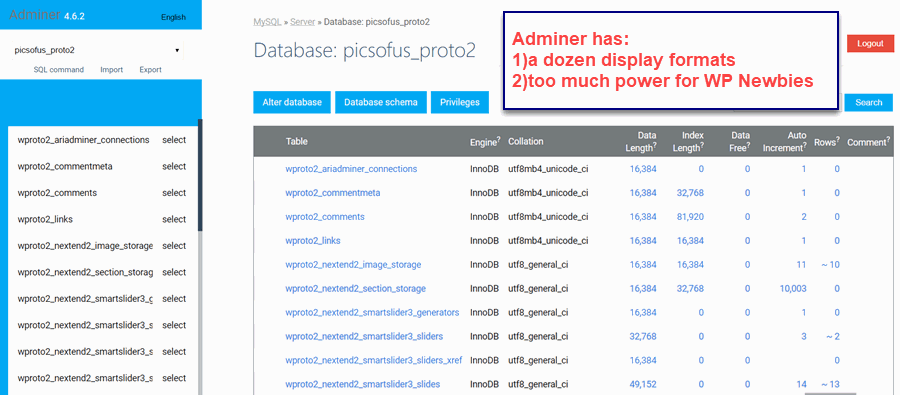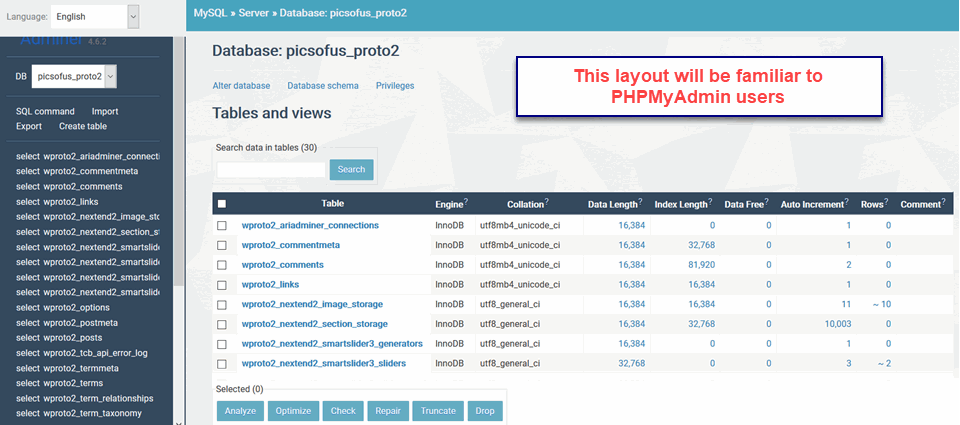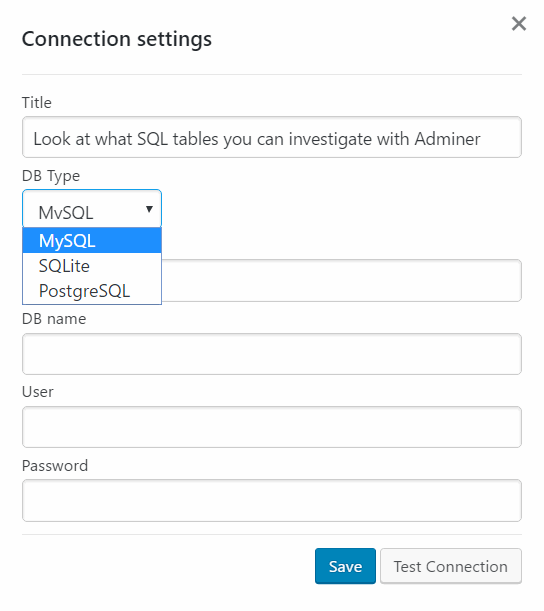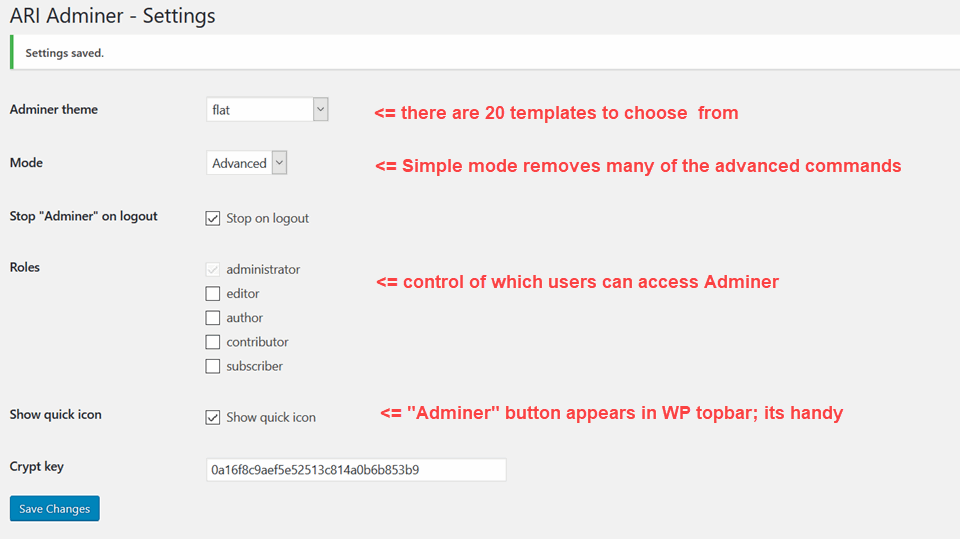Monitoring your WordPress database tables has long been a nuisance – not any more. Within the past 3 years a steady stream of improved plugins allow users to view, optimize and even directly update their WordPress tables. Instead of having to go into cPanel and run PHPMyadmin to see the underlying WordPress database tables, developers now have a number of plugins that allow them to review their tables directly in the WP admin backend. This capability has become ever more important for WP developers trying to debug increasingly complex WordPress system configurations.
But a word of caution, these tools are so powerful that they are not for use by WordPress DIY Newbies – there are too many ways in which a WordPress installation could be wiped out. With that caveat lets have a look at one of the more attractive WordPress database tools
ARI Adminer is PHPMyAdmin in the WP Backend
Take a look at the following screenshot of ARI Adminer in action:
 First, Adminer displays all the current WordPress and added plugin tables. Users can drop, empty, and alter/update any of these WP tables. – hence our caveat on WP Newby use. All of the commands available to a PHPMyAdmin user are also doable in Adminer. And the layout looks remarkably similar:
First, Adminer displays all the current WordPress and added plugin tables. Users can drop, empty, and alter/update any of these WP tables. – hence our caveat on WP Newby use. All of the commands available to a PHPMyAdmin user are also doable in Adminer. And the layout looks remarkably similar:
 Note what is available to the Adminer user:
Note what is available to the Adminer user:
- Any legal SQL command, Import, Export and Create Table commands;
- Select any of the WordPress Tables and view the table structure and contents;
- Chooose any table to Analyze, Optimize, Check, repair, Truncate or Drop it;
- Select any table to view and/or edit its structure and data contents
These are very useful viewing and selected editing capabilities – especially when debugging an errant custom post type or plugin. Even better, these same viewing capabilities can be used when interfacing with other applications like say Sugar CRM or a Drupal systems. Here is how to connect to external database tables:
 True this does not allow connections to large scale SQL databases like DB2, Oracle and SQL Server. Nor does Adminer support BigData sources like MongoDB or Couchbase. But recently working with WP RestAPI connections in a WordPress installation, it was a pleasure to work with Adminer making the connection to diverse databases.
True this does not allow connections to large scale SQL databases like DB2, Oracle and SQL Server. Nor does Adminer support BigData sources like MongoDB or Couchbase. But recently working with WP RestAPI connections in a WordPress installation, it was a pleasure to work with Adminer making the connection to diverse databases.
So very useful debugging can be achieved with Adminer:
 Here I am confirming that the WEForms plugin’s meta data has been entered properly into the WP database. Note that one can edit and update data rows of any WordPress table as done here.
Here I am confirming that the WEForms plugin’s meta data has been entered properly into the WP database. Note that one can edit and update data rows of any WordPress table as done here.
Finally, the settings for Adminer allow for a number of additional controls:
 The most important setting is the Roles setting which allows users to limit which users can access Adminer. This is vital for multiuser websites. Next, developers should tryout the Adminer themes – they change not only the color and styling of Adminer display pages but also the layout of data and command buttons. Find your favorite. Most developers will want to leave the Advanced setting for Mode. And the Adminer button in the top bar is handy when you are doing heavy debugging.
The most important setting is the Roles setting which allows users to limit which users can access Adminer. This is vital for multiuser websites. Next, developers should tryout the Adminer themes – they change not only the color and styling of Adminer display pages but also the layout of data and command buttons. Find your favorite. Most developers will want to leave the Advanced setting for Mode. And the Adminer button in the top bar is handy when you are doing heavy debugging.
Summary
ARI Adminer is an admirable addition to the growing stock of WordPress database management plugins. For the PHPMyAdmin veteran, the familiar range of commands and layout will be welcome. Couple Adminer with the Query Monitor plugin and then WordPress developers are well armed for RestAPI, Custom Post Type and other advanced WP debugging & development.
